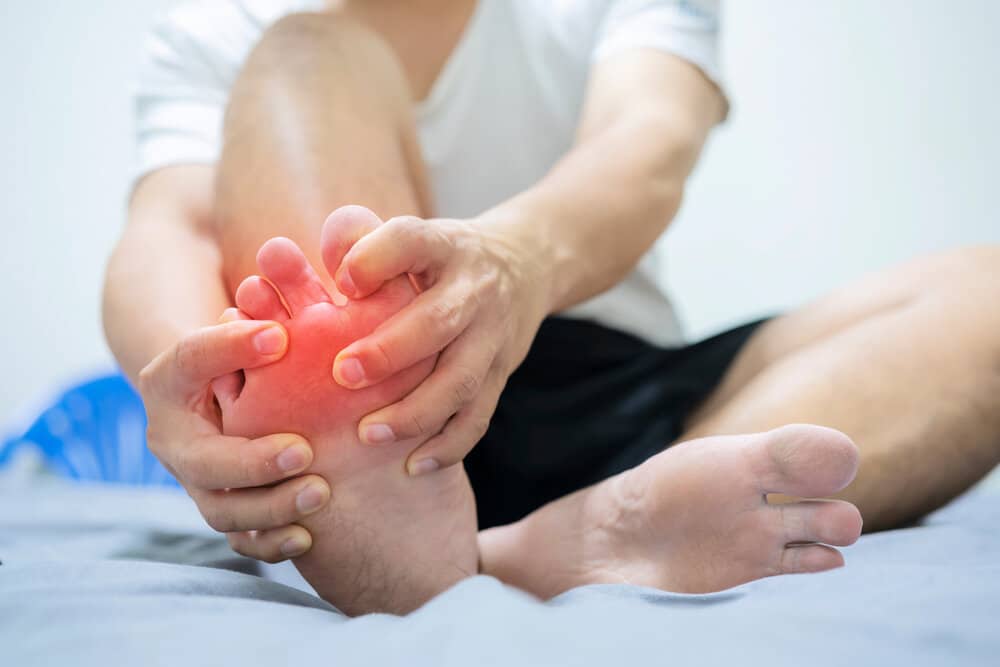
There are over a hundred different types of arthritis. They have an impact on almost 54 million people in the US. While some disease varieties are more widespread than others, they all have varied effects on people. One of the more prevalent kinds among males is gout, which may be painfully painful. A gout flare, which affects more than 9 million people, can produce excruciating agony and immobility. And, thanks to hormones, males are four times more likely than women to suffer from gout.
In layman’s terms, gout is sourced from high uric acid levels (hyperuricemia). Uric acid is excreted by urine and perspiration in ordinary humans. However, uric acid levels in persons with gout are excessively high for the body to remove. Uric acid builds up in the lower joints, forming crystalline shards that move to the big toe. These crystallized shards resemble microscopic shards of glass, tearing tissue and causing excruciating pain. A gout attack can often leave patients bedridden and unable to walk for many days due to the excruciating pain. If you are undergoing this condition, immediately start osteoarthritis treatment.
Making a Diagnosis
Despite the fact that gout is more common in men and has distinct symptoms, many persons with the disease go untreated. The discomfort is frequently attributed to a break or sprain by doctors and patients. Others choose to suffer in silence at home rather than seek medical help. Gout, on the other hand, if left untreated, can cause irreparable damage to the joints it affects.
Symptoms and Causes of Gout in Men
Symptoms
Gout symptoms and indicators nearly typically strike unexpectedly, and frequently at night. Intense joint discomfort is one of them. Gout is most commonly associated with the big toe, but it can affect any joint. Ankles, knees, elbows, wrists, and fingers are among the other joints that are typically afflicted. The pain will most likely be the worst during the first four to twelve hours after it starts. Ask your arthritis doctor to know more.
-
Discomfort that lasts – Some joint soreness may remain from a few days to a few weeks after the most acute pain has subsided. Attacks in the future are more likely to continue longer and damage more joints.
-
Redness and inflammation – Swollen, sensitive, heated, and redness develop in the afflicted joint or joints.
-
Limited motion – You may not make joint movements normally.
Causes
Gout occurs when urate crystals build up in your joints, producing inflammation and excruciating pain. When your blood has too much uric acid, urea crystals can form. When your body breaks down purines, which are chemicals found naturally in your body, uric acid is produced.
Purines can also be found in some foods, such as organ meats and red meat. Anchovies, sardines, scallops, mussels, trout, and tuna are examples of purine-rich seafood. Higher amounts of uric acid are promoted by alcoholic beverages, particularly beer, and sweetened drinks with fruit sugar.
Uric acid breaks down in the blood and flows through your kidneys into your urine in normal circumstances. However, your body may create too much uric acid or your kidneys may discharge too little uric acid at times. Uric acid can build up in joint surrounding tissue, causing sharp, urate crystals that cause swelling, inflammation, and pain.
When should you see a doctor?
Call your arthritis doctor for osteoarthritis treatment if you get sudden, severe pain in a joint. Untreated gout can lead to increased discomfort and joint damage. If you have a fever and a heated and inflamed joint, this could be an indication of infection. Seek medical help right once. For steady treatment, see us at Oklahoma Spine & Pain Management.
**Disclaimer: This content should not be considered medical advice and does not imply a doctor-patient relationship.






